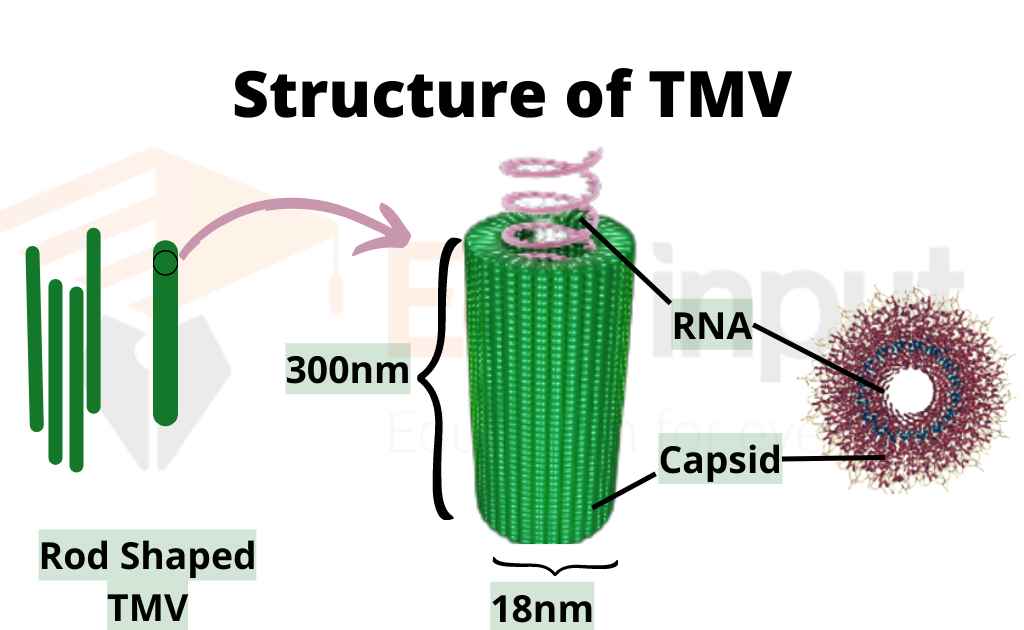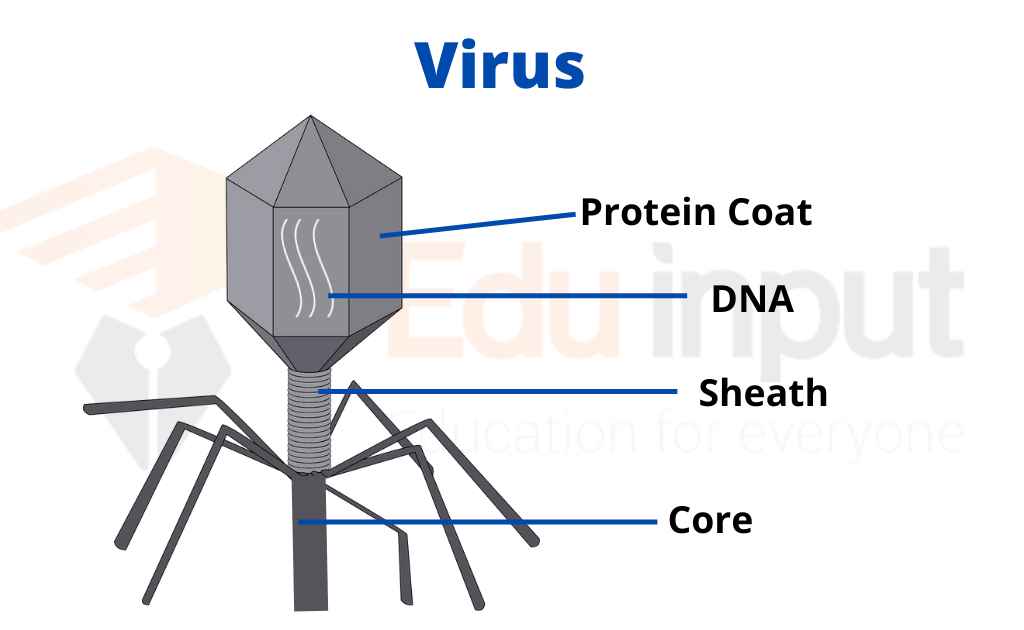Tobacco Mosaic Virus (TMV) – Structure and Transmission Mechanism
Tobacco mosaic virus (TMV) is a RNA virus that infects plants, especially tobacco and other members of the Solanaceae family. Its infection causes characteristic patterns of mottling and discoloration on the leaves, hence its name.
TMV is extraordinarily stable, meaning that it can withstand extreme temperatures and remain infectious for long periods of time.
TMV was the first virus discovered, and it caused a lot of damage to tobacco crops in the late 19th century. However, in 1930 it was discovered that the real cause of the disease was a virus. This finding marked an important breakthrough in the study of viruses and their effects on plants.
Structure Of Tobacco Mosaic Virus
Tobacco mosaic virus has a unique rod-like shape. It is an RNA virus. Its virions are 300 nm in length and 18 nm in diameter. When negative staining is used in electron microphotographs, a distinct inner channel of 4 nm is visible. It contains Capsid and RNA.

Capsid:
The capsid of the virus is made up of 2130 molecules of the coat protein. The coat protein is what gives the virus its rod-like helical shape. Each protein monomer is made up of 158 amino acids. There are four main alpha-helices that make up the protein monomer.
RNA:
This virus has a single molecule of RNA that is 6400 bases in length. This RNA is located within the helical structure of the virus and forms a hairpin loop structure. The RNA is located at a radius of 6 nanometers. The RNA is protected from the action of cellular enzymes by the coat protein.
There are three RNA nucleotides per protein monomer.
Transmission of Tobacco Mosaic Virus
TMV is most commonly transmitted when an infected leaf comes into contact with a healthy plant. However, it can also be transmitted by contaminated tools or by workers whose hands become contaminated after smoking cigarettes.
Once the virus has entered a plant, it can infect the cells and reproduces quickly. The virus can also contaminate seed coats, and the plants germinating from these seeds can become infected.
TMV enters the plant cell through tiny wounds. Once it’s inside, the virus falls apart to reveal the TMV RNA. This RNA is positive-sense, or “+ sense”, which means that it can be translated using host Ribosomes. The proteins associated with replication (RP) begin to be translated within a few minutes of infection.
Hosts Of The TMV
Tobacco Mosaic Virus infects;
- Tobacco
- Tomato
- All peppers
- Ground cherries
- Eggplant

 written by
written by 




Leave a Reply